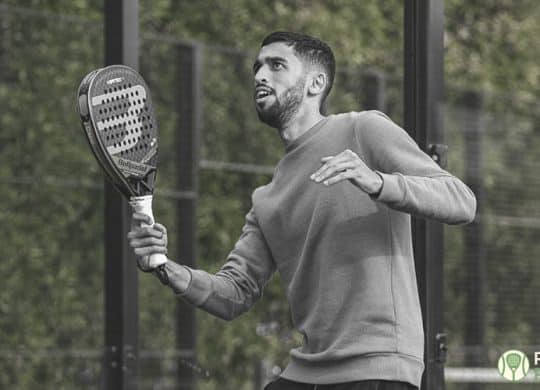Be it an aspiring padel player or someone who has recently explored the sport, a racquet is a quintessential tool for relishing the game. But it is more than what meets your eyes! There is a bounty of padel equipment one requires to have an experience of a lifetime on the court. From varied balls to padel shoes, many elements need to be discovered for an enthralling game session. This blog enlightens the essential components of the padel, whether you are a novice or playing it at the competition level.
Types of Padel Rackets: Making a Choice Between Control or Power Pedal Racket
Of all the padel training equipment available, getting a racquet that suits your gaming style is crucial. There is no singular shape for a pedal racquet as each one possesses diverse characteristics. For instance, a round racquet is more appropriate for players who prefer control but are not ideal for the ones favoring optimal power.
There are three types of padel racquets: diamond, round, and teardrop. Let us dive deep and know more about each of them.
- Diamond-Shaped Racquet: The shape of this racquet resembles an inverted pyramid. It is ideal for the players having short swings and requiring assistance regarding the power. The diamond-shaped racquets are slightly tilted as the balance is focused on its head. Thus, you must go for the model weighing less than the standard weight.
- Round-Shaped Racquet: This racquet provides unparalleled control and is more suited for players with long swings, hitting the ball by releasing the arm without distress. The round-shaped racquets are more manageable as they are flawlessly balanced, owing to their circular build.
- Teardrop Shaped Racquet: If you are a beginner, this racquet is the best choice for you. The teardrop-shaped racquets are the most versatile ones as they offer a balance of control and power to the player. It is a common racquet shape built for players possessing a medium swing. You can pick amongst classic or oversize teardrop racquets depending on the swing, whether it is shorter or longer.
Padel Balls to Keep the Game Going
Though most people play pedal with a tennis ball, it is not recommendable. A padel ball possesses different characteristics than a tennis one in terms of pression and weight. It has a rubber sphere decked with an even surface. A padel ball is usually yellow or white in color, having a precise diameter of 6.35cm to 6.77cm.
If the padel ball contains lower pression, it becomes more comfortable playing with it. While selecting the ball, you must consider the length of the felt hairs concealing the rubber. If they are longer, the ball will travel at a slower pace than usual.
Padel Sports Shoes to Keep You on Your Toes with Comfort
If you have ever hit off the padel court wearing regular shoes, you must have noticed discomfort in your knees, back, or hips afterwards. The prime reason behind this is the inappropriateness of footwear for the game. Footwear exclusively engineered for padel helps avert injuries, accelerating the player’s potential.
In the padel match, the movements are abrupt and intense, requiring you to switch positions and swiveling while playing off the wall. There is continual jumping, landing, starting, and stopping, so the players must bend their knees quite often. Playing padel for 2 to 3 hours every day necessitates getting shoes that support your physical fitness, padel techniques, and the court type you perform on. Here are the top two features that you must look for while getting padel shoes:
Maximum Comfort: It is a crucial factor while picking padel training equipment like footwear. Ensure that the shoes are comfortable to wear for long hours and support the flexible movement. Assess the cushioning in the heel area to get optimal support for your feet while playing.
Heavy-Duty Performance: Durability aids the shoes in resisting varying levels of wear and tear that come with the game. However, a shoe’s sturdiness will depend on your playing intensity, weight, and training intervals.
Racquet Cases with Thermal Insulation
Once the padel match is over, you must keep your racquets in a protective case. It not only safeguards your racquets from any potential damage but also lets you carry them anywhere with convenience. Some racquet cases have thermal insulation, which protects the padel equipment against extreme temperatures.
Clothes and Other Accessories
When it comes to clothing, look no beyond breathable and athletic t-shirts, skirts, and shorts made with top-quality comfortable materials. Usually, padel courts are situated outdoors; hence you must wear a cap or visors to shield your eyes from the scorching sunlight. In addition, get a sweatband to dry off the sweat from hair, whether the match is indoors or outdoors kids bouncy castle.
Conclusion
Padel equipment is more than just a racquet and a ball. To have a satisfying experience during your gameplay, one requires the accessories mentioned above. Invest in quality pieces to ace the padel in full glory!





